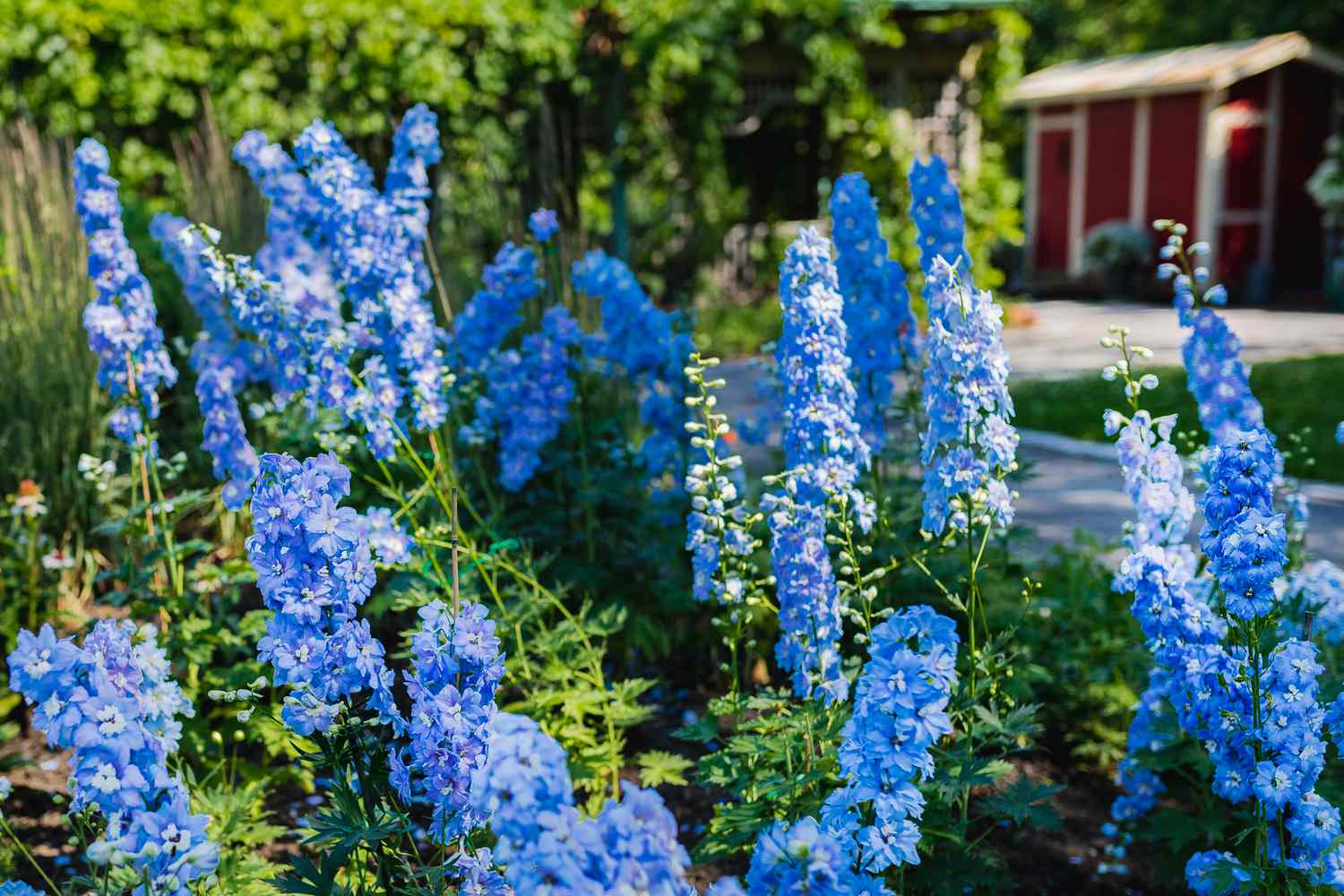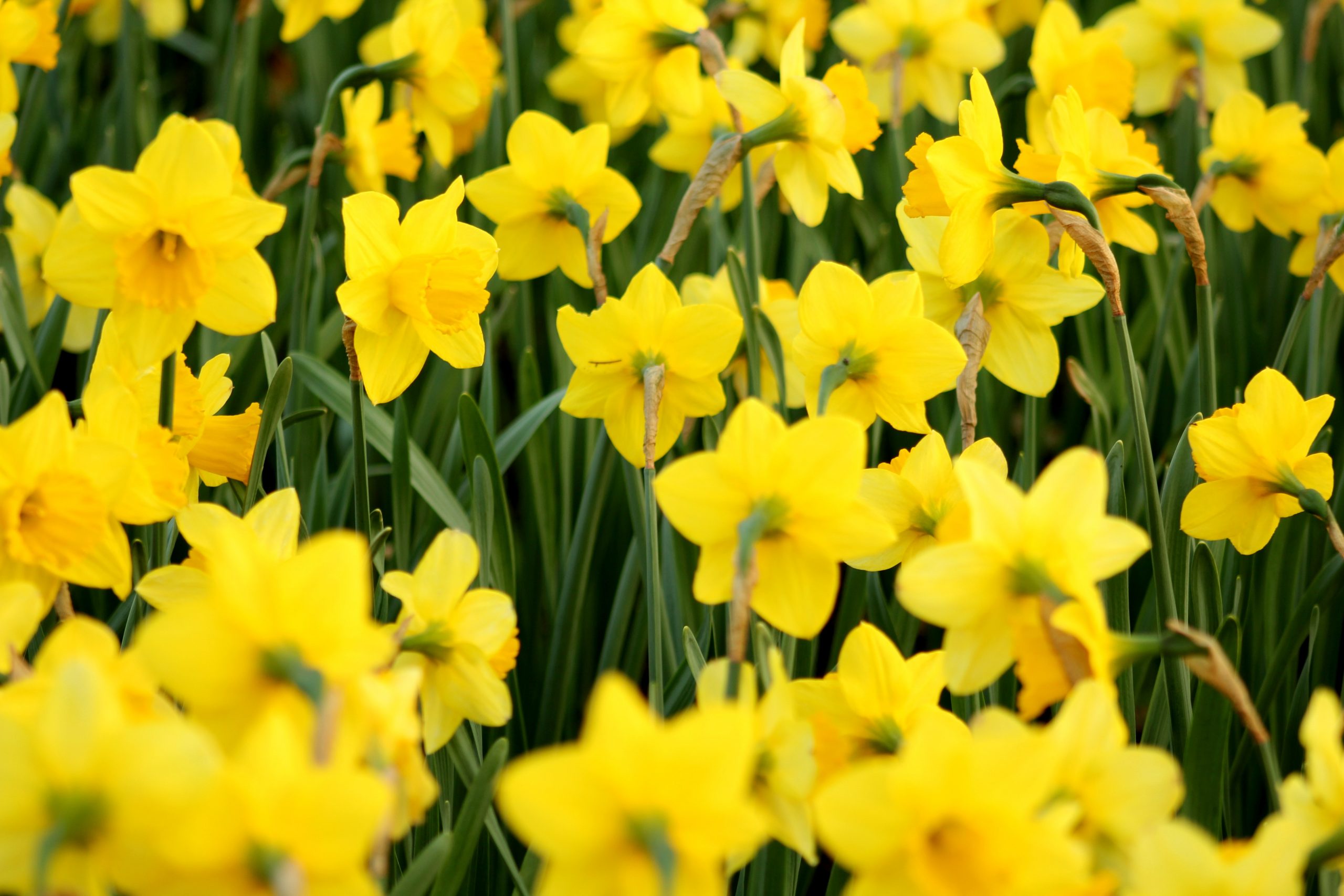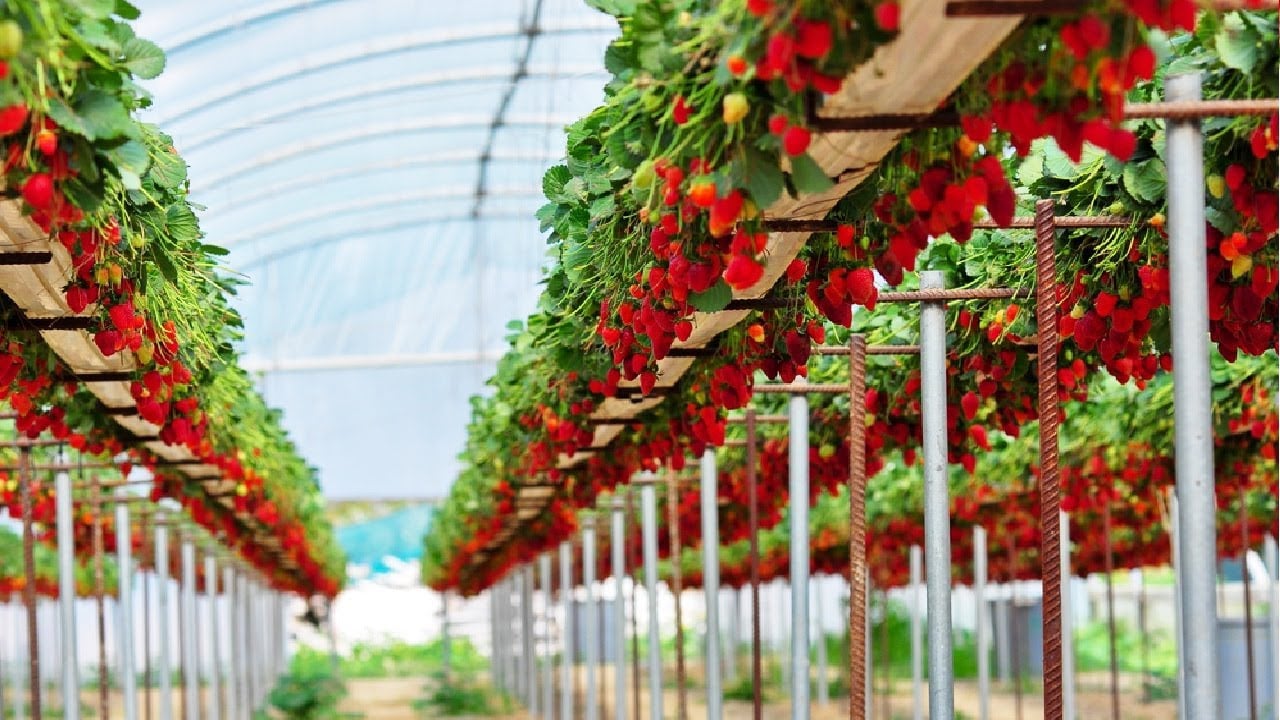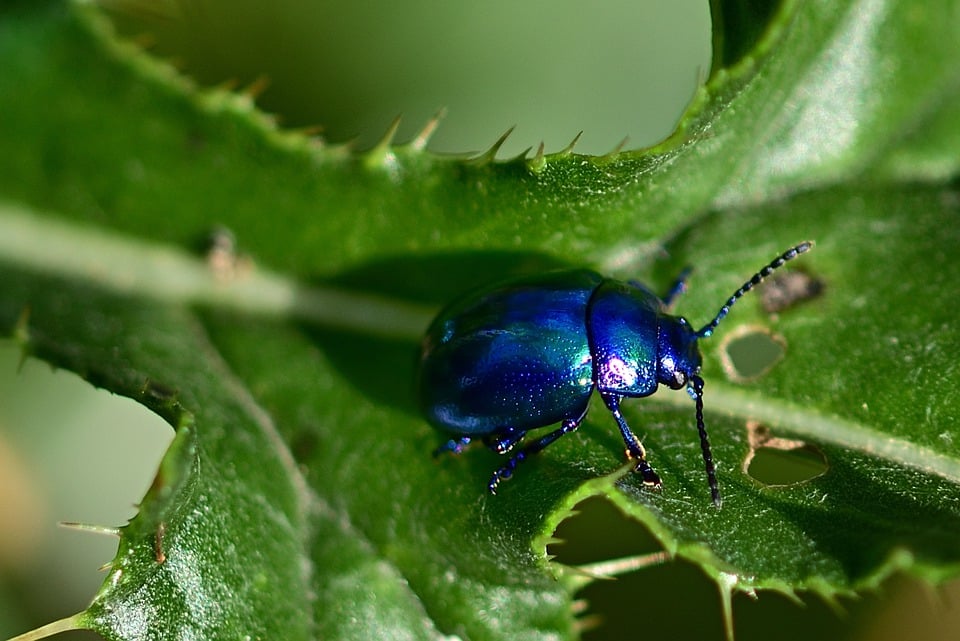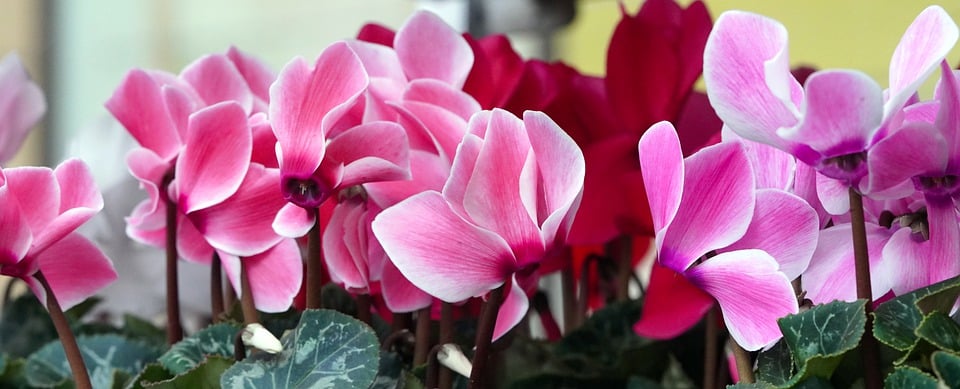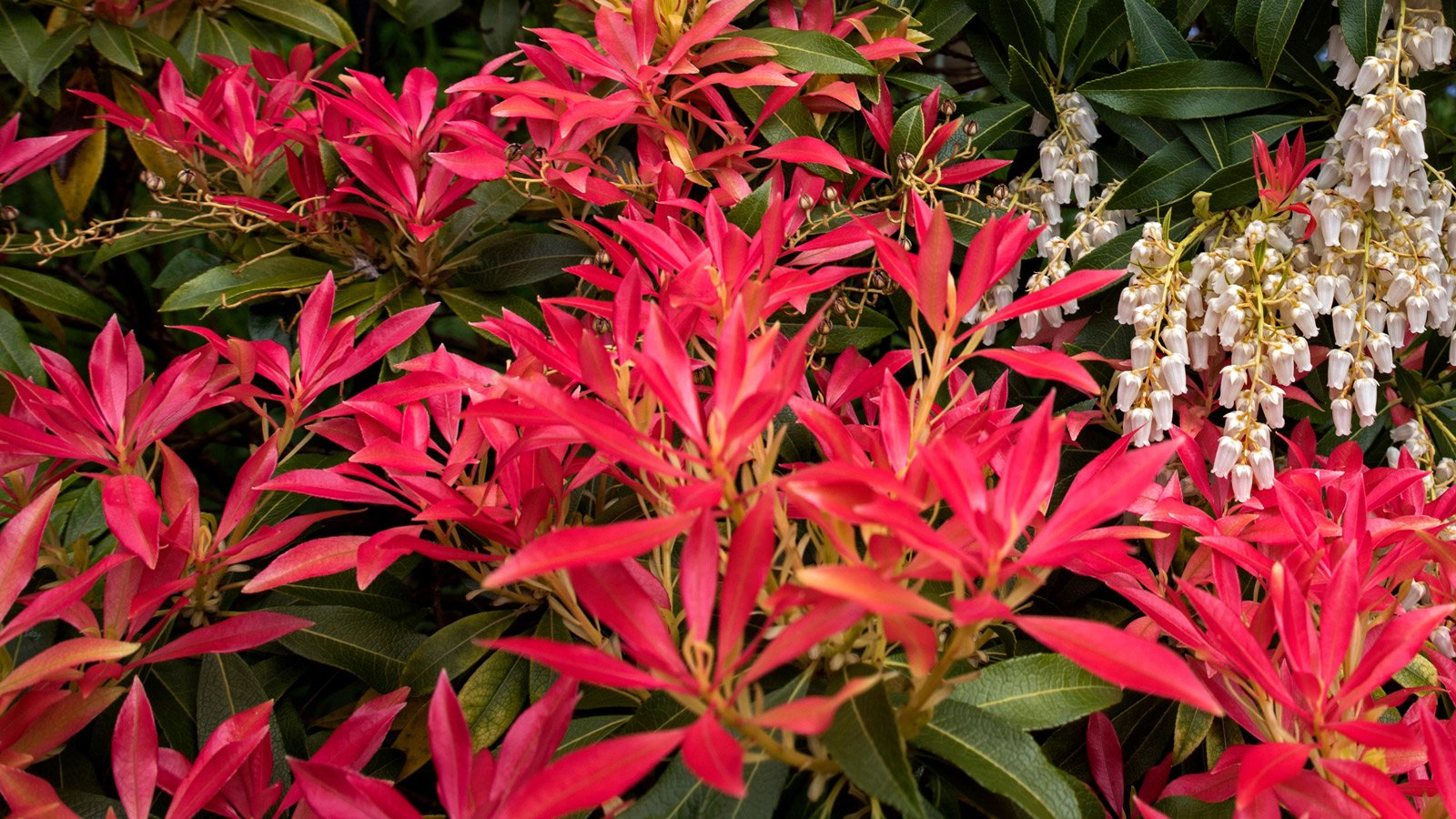Best Practices for Watering Your Aloe Vera Plant
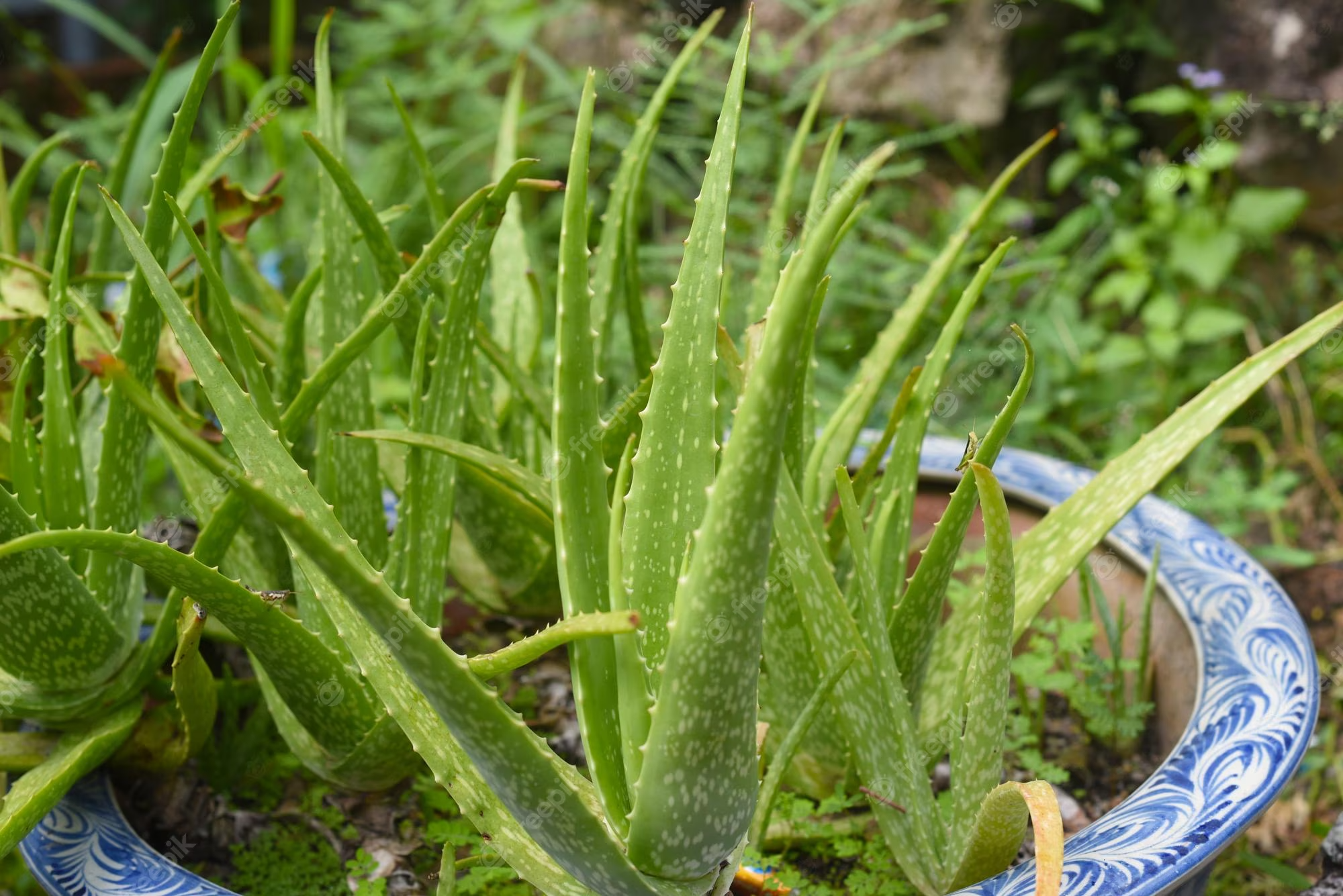
Table of Contents
What is that one plant that has enormous benefits? And you even found them in many households – Yes, that is Aloe vera! It is one of the simplest plants to cultivate at home. It is a valuable and adaptable plant with a pleasing appearance and therapeutic benefits. Since this plant belongs to the Cacti family and comes from the Arabian Peninsula, it stays hydrated and vibrant even without much water. Therefore, having a few of these gorgeous plants bloom at home is always beneficial.
Aloe plants are incredibly resilient and require little maintenance because they are a form of succulent. The plantation of these is not just limited to households. In fact, you can even grow them at your workplace or outdoors for aesthetic purposes. So, are you ready to provide your aloe with the best parenting ever? This text will offer you a thorough explanation of how to water aloe vera plants properly by taking into account a number of variables like environment, soil type, and season.
Learning About The Basic Requirements Of Aloe Vera Plants
Aloe vera generally grows about 2 to 3 feet in length and width. In short, it remains small throughout its entire life. However, they grow really fast! The aloe vera plant is fresh and green, with a few thorns on each side of its leaves. Their hefty leaves are stuffed with sticky tissue or gel-like things that serve as a water reservoir for the plant’s natural desert habitat. In rare scenarios, these plants also produce orange or red flowers. Recently, aloe vera plants have gained massive popularity as a houseplant because they are used for many purposes like healing, hair care, skin care, weight loss, and much more.
As discussed above, aloe plants are indigenous to desert areas. Hence, they have evolved to thrive there! They can survive in dry spells as their leaves retain a good amount of water. Fungal infections, root rot, and other issues can result from either excessive or inappropriate irrigation. That is why, as an aloe parent, you must understand and comprehend the basic requirements of these plants to keep them healthy and vigorous.
1. Soil System
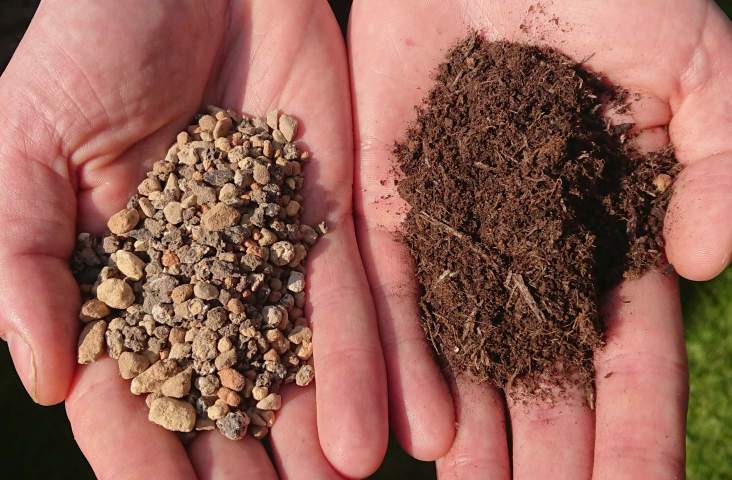
Aloe vera requires dry soil with excellent drainage. It is highly susceptible to tap water’s mineral content and pH – therefore, it is crucial to hydrate them with filtered water. Any extra humidity in the soil can damage and spoil these plants.
The optimal conditions for aloe vera growth are deep and infrequent watering. Less water is much preferable compared to heavy watering as aloe plants are very tolerant of dry circumstances and susceptible to root damage. Considering the soil’s moisture, you must water these plants accordingly.
2. Water Frequency
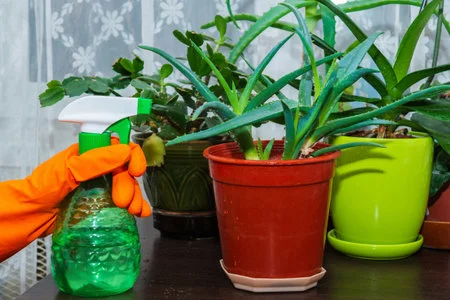
Numerous variables, including climate, season, and plant size, affect how frequently plants need to be watered. Aloe vera needs to be watered deeply yet sparingly as a general guideline. During the growing season, watering should only be done every week. You can even add a liquid fertilizer once a month instead.
Watering aloe vera in rainy and winter seasons should be limited to once a month.
Technique Of Watering Aloe Plants
It is essential to water aloe plants properly to prevent fungal infections and rot from developing on the leaves. Instead, thrive to uniformly wet the soil by directing the water towards the plant’s base. To prevent soil erosion and to ensure that the water reaches the root zone – use a watering can or a moderate trickle of water.
1. Do The Test
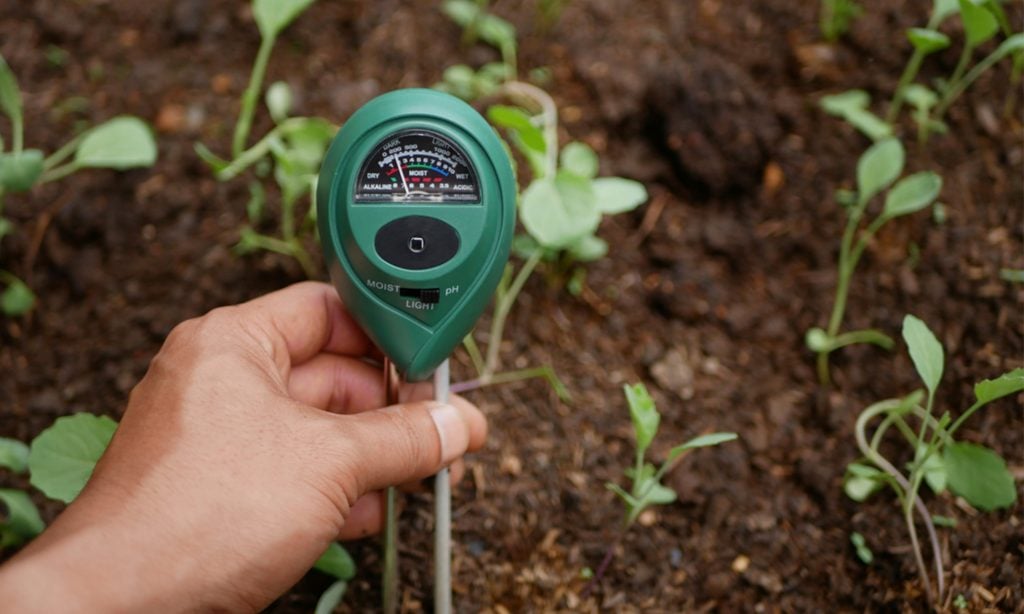
How will you decide whether it is the right time to water your aloe vera? Do this simple test for quick solutions! Insert a stick in the soil to check the moisture content. If the stick is wet for about 5 to 8 cm – there is no need to water the plants. However, keep a check on the soil though. If the stick comes out as dry, water the plants seldomly.
You can even do the same with your finger, Bury your entire finger inside the soil. If you feel it’s dry, it’s time to water the plants. However, you should wait a few days before you water the plants again if the soil seems damp.
2. Changing Watering Habits
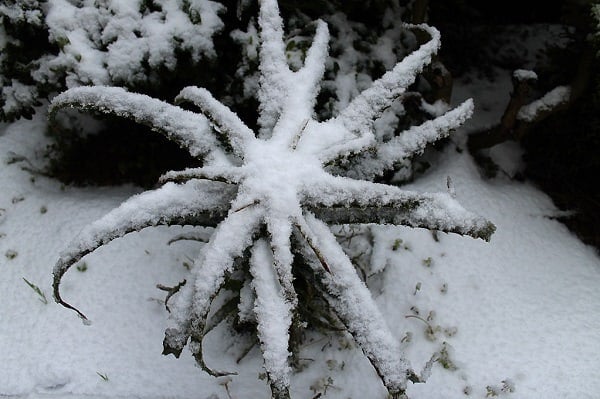
Seasonal and climatic variations affect how much water aloe plants require. You might need to water these plants a little more during the summer as every organism suffers higher evaporation and transpiration rates during this period. A temperature below 10 degrees Celsius is not favourable for these plants. So, get them indoors if the temperature in your region drops to this level.
On the contrary, avoid over-watering in colder or humid conditions – minimize the frequency of watering accordingly. It is very sensitive to frost! Keep checking the soil’s moisture content and adjust your watering procedures as necessary.
3. Beware Of Underwatering
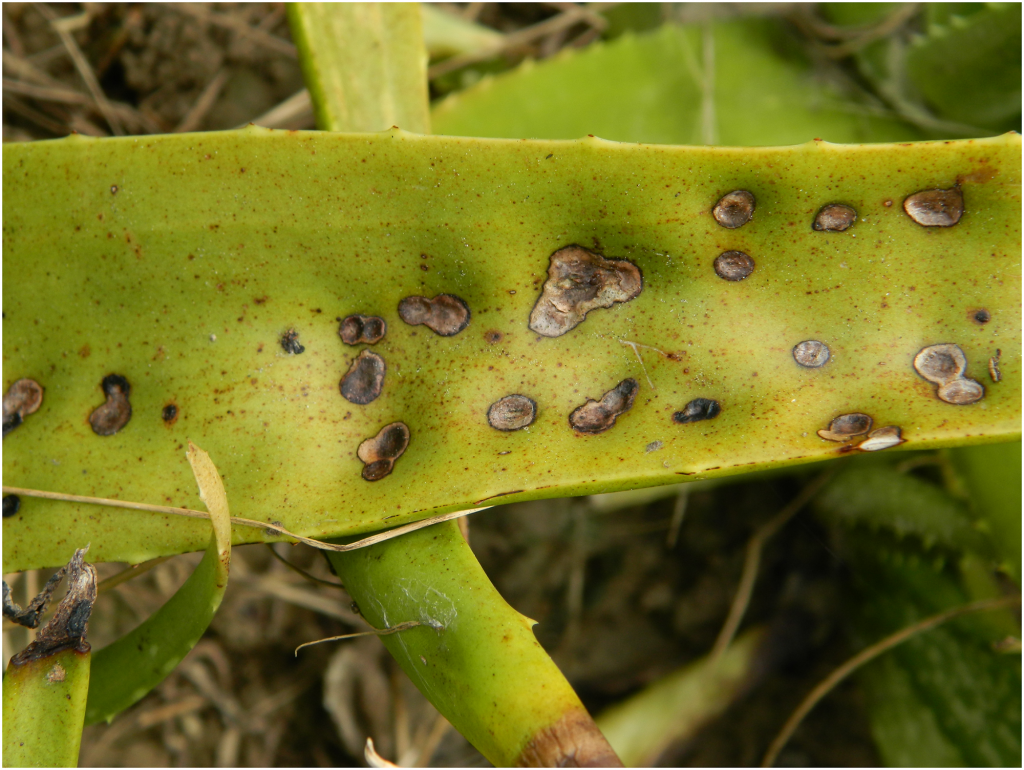
In addition to overwatering, another issue with aloe plants maintenance is underwatering. Leaf shrinkage, scratchy leaves, brown leaf tips, dry black spots, and dry ends are a few common indicators of underwatering. This condition can occur if you don’t frequently water the plants, especially in the summer season. The capacity of Aloe vera plants to stay dehydrated does not match the typically deserted cacti. Hence, these plants need at least minimal water during summer to sustain and look fresh. If not watered properly, plant disease is the result!
However, if you see any indication of plant illness, examine the soil and start watering the plant before it becomes thick and crunchy.
4. Using Fish Tank Water
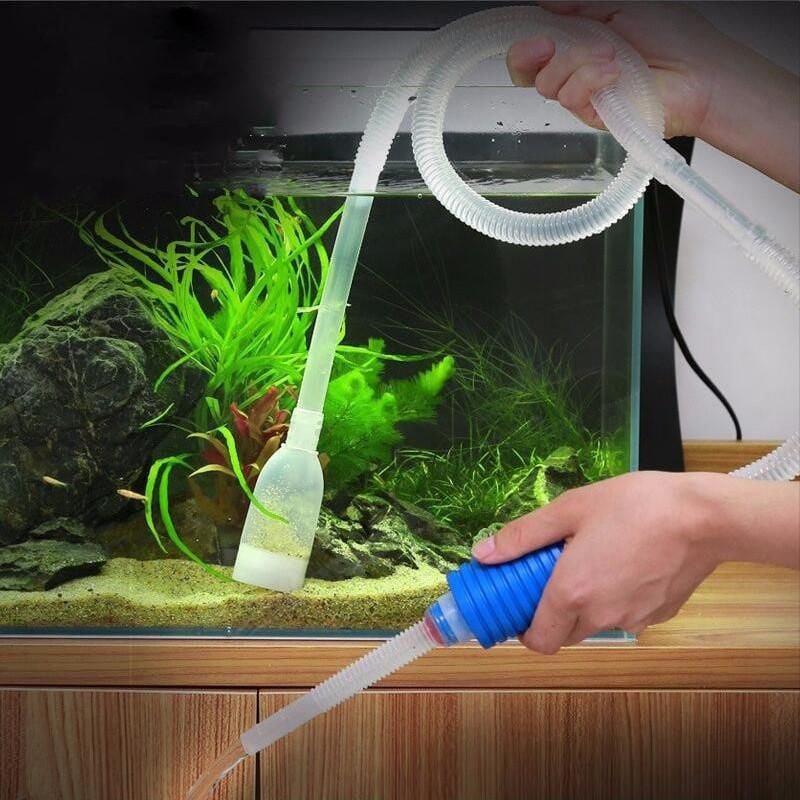
Aloe vera plants can benefit greatly from receiving their hydration from a natural, nutrient-rich source by being irrigated by fish tank water. Aloe vera may grow healthily and produce colourful flowers when given access to fish tank water as it contains vital minerals and other components.
Additionally, this water has helpful microorganisms and bacteria that act as organic fertilisers that aim to increase the plant’s overall health. However, it is important to ensure that the water in the fish tank is devoid of any treatment or chemical which can harm aloe vera plants. In this way, you can sustainably and ecologically feed aloe plants by reusing the precious fish tank water.
Watering For Potted Aloe Vera Plants
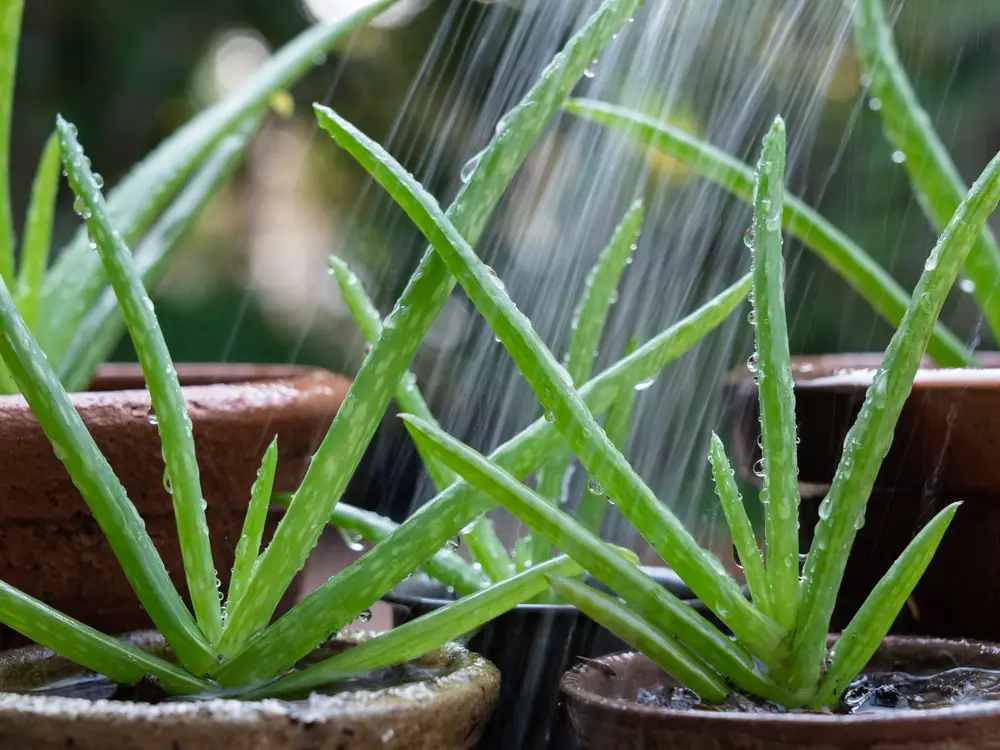
Many people prefer planting aloe vera in containers or pots. But do you know that these plants require special considerations? First and foremost, good drainage is extremely important! Ensure that the pot you use to cultivate aloe vera should have a good amount of drainage holes so that additional water can flow out easily.
Before adding the soil mixture, add a layer of stones or sand to the bottom of the container to improve drainage. Avoid using pot saucers as they can trap excess water, resulting in plant destruction.
Conclusion
The health and vitality of aloe vera plants depend on proper watering. You may ensure optimum development and avoid frequent problems like fungal illnesses and root rot by comprehending the requirements for watering, utilizing a well-draining soul, and modifying water practices according to season and climate. Remember that watering aloe vera plants sparingly but properly is crucial as they differ from other plants. Moderation is essential here!
To ensure that the water touches the roots of aloe plants and there is proper drainage, it is better to wait until the soil is completely dry before watering again. Additionally, you should also avoid keeping these plants in overheated areas, as that can cause illness. Rest, by following the above-mentioned pointers, you may continue to benefit from this amazing plant’s beauty and advantages for many years.
Frequently Asked Questions (FAQs)
How Frequently Should One Water an Aloe Vera Plant?
It is advisable to water aloe vera plants every week. However, the watering frequency may change depending on the humidity, pot size, soil, and temperature. Since these plants are prone to root rot, check the soil before watering the plant.
How Much Water Does an Aloe Plant Require?
There is no specific quantity of water that an aloe vera plant needs. Aloe plants enjoy somewhat dry circumstances, so let the soil decide how much water is needed. Just ensure to keep your plant out of standing water, as the plant may get damaged.
Is Aloe Vera Plant Intolerant to Tap Water?
Most aloe vera plants can tolerate tap water. However, it is best to wait for 24 hours before using tap water since it contains high concentrations of fluoride and other chemicals. Waiting for some time will allow the chemicals to dissipate. You can also use rainfall, filtered water, or distilled water for aloe vera plants.
Can Aloe Vera Be Watered with a Spray Bottle?
A spray bottle can be used to irrigate aloe vera, even if misting or spraying isn’t always necessary. Instead of simply spraying the leaves, it is crucial to make sure the soil is moderately moistened and reaching the root. Try watering the roots every time for better health of the plant.
Can Fish Tank Water Be Used for Aloe Vera Plants?
Watering aloe vera plants with fish tank water has several advantages. The nutrients from fish feces may be present in water, which will act as a natural fertilizer. To protect the plant, it is crucial to make sure the water is devoid of any drugs, algae control solutions, chemicals, or treatments.

